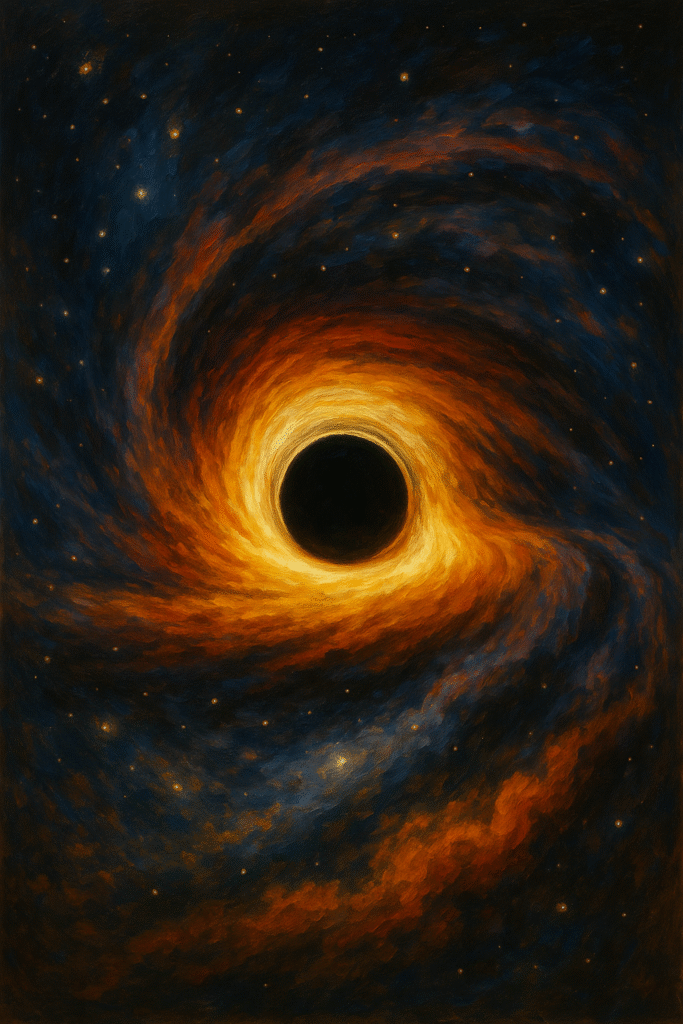What Is a Black Hole?
A black hole is a region in space where gravity is so strong that nothing, not even light, can escape it. Formed when massive stars collapse under their own gravity, black holes remain one of the universe’s greatest mysteries, inviting extensive research and fascination.
Black Hole Formation: The Stellar Collapse
Black holes form through the death of massive stars. As the star exhausts its nuclear fuel, gravitational forces overpower and compress the star’s core, leading to a singularity—a point of infinite density.
The Mysteries of Black Holes: What We Know So Far
The enigma of black holes continues to challenge scientists. According to NASA, black holes are detected by observing the motion of stars and gas around invisible masses. They’re classified into three main types: stellar, supermassive, and intermediate.
* Stellar Black Holes: Result from collapsed stars.
* Supermassive Black Holes: Found at the centers of galaxies.
* Intermediate Black Holes: Thousands of solar masses, their formation is still debated.
What’s Inside a Black Hole?
The Event Horizon: A Boundary Beyond Sight
The event horizon is the outer boundary of a black hole, beyond which light cannot escape. This threshold marks the point of no return, as any object crossing it becomes invisible to the outside universe.
Singularity: The Core of a Black Hole
At a black hole’s core lies the singularity, where gravity compresses mass into an infinitely small space. Theorists propose that understanding singularities might unlock new physics laws, yet they remain beyond our current grasp.
Exploring Black Holes: Current Research Frontiers
NASA’s Black Hole Research and Discoveries
NASA’s missions have significantly expanded our understanding of black holes. The Hubble Space Telescope and the Chandra X-ray Observatory have detected black holes and captured their effects on surrounding matter. For example, the capturing of gas accretion discs helps illustrate how black holes grow.
Advances in Black Hole Imaging Technology
Recent advancements in imaging, such as the Event Horizon Telescope, have made it possible to capture the first images of a black hole’s shadow. These technological leaps provide insights into black hole structures and their interaction with nearby matter.
Myths About Black Holes: Debunking Misconceptions
Common Black Hole Misconceptions
* Black Holes Suck Everything: Black holes do not actively “suck” objects; they exert gravitational pull like any celestial body.
* All Black Holes Are Massive: While supermassive black holes exist, there are also smaller, less substantial varieties.
Black Holes in Popular Culture
From movies like “Interstellar” to novels, black holes are often dramatized, influencing public notions of these cosmic entities. These portrayals, although exaggerated, spark interest in astrophysics.
Philosophical Insights: Black Holes and Our Universe
Cosmic Perspective: The Role of Black Holes
Black holes challenge our understanding of time, space, and physics, suggesting the universe is more complex than it seems. They serve as reminders of how much is yet to be discovered.
Beyond Facts: Insights Into Our Place
Reflecting on black holes urges contemplation on humanity’s place within the universe. Comprehending such phenomena highlights the vast mystery of existence, inspiring further exploration and inquiry.
Conclusion: Embracing the Unknown
In summary, black holes are not just cosmic phenomena; they are gateways to understanding the universe’s deepest mysteries. As technology and research advance, our comprehension of these enigmatic voids continues to grow. Embrace the unknown and delve into the wonders of space exploration.
Frequently Asked Questions (FAQs)
1. How do black holes form?
* Black holes form when massive stars collapse under their own gravity, leading to a singularity.
2. What happens if you fall into a black hole?
* An object would experience spaghettification, stretching due to extreme gravitational forces.
3. Can we detect black holes?
* Yes, by observing the effects on nearby stars and gas, as well as gravitational waves.
4. What is the largest black hole discovered?
* Ton 618, an ultramassive black hole, is the largest known, with a mass around 66 billion times that of the sun.
5. Are black holes visible?
* Black holes themselves are invisible, but their surrounding environment, such as accretion discs, emits detectable radiation.
References
1. NASA’s Official Black Holes Reference Page. Retrieved from NASA.gov
2. Event Horizon Telescope Collaboration. (2019). First M87 Event Horizon Telescope Results. I. The Shadow of the Supermassive Black Hole. _The Astrophysical Journal Letters_, 875(1).
3. Chandra X-ray Observatory Website. Retrieved from Harvard.edu


